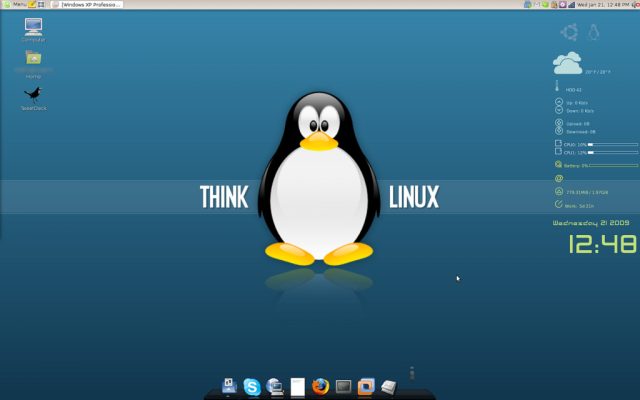
Linux creator Linus Torvalds last night announced the release of version 3.9 of the kernel. Available for download at kernel.org, Linux 3.9 brings a long list of improvements to storage, networking, file systems, drivers, virtualization, and power management.
H-Online editor Thorsten Leemhuis has an excellent rundown of what's new in Linux 3.9. One new feature, listed as "experimental," allows SSDs to act as caches for other storage devices. "This feature is able to speed up data writes, as it allows the faster SSD to first cache data and then, in a quiet moment, transfer it to the slower hard drive," Leemhuis wrote.
Linux maintainers have also done some driver work that might improve the sometimes questionable support for desktops and laptops. New drivers include support for Intel 802.11ac Wi-Fi components, as well as trackpads used in Samsung's ARM-based Chromebook and the Dell XPS 13 Developer Edition Ultrabook. The Kernel's driver for AMD Radeon graphics chips was updated to support Oland chips in the 8500 and 8600 Series Radeon video cards, in addition to AMD's forthcoming Richland chips. The driver code for HD audio codecs is also now "leaner and more robust."
"With Intel's new Wi-Fi drivers and the AMD graphics driver improvements, the kernel is now better equipped for tomorrow's PCs and notebooks," Leemhuis wrote.
Other improvements include experimental support for RAID 5 and 6 in the Btrfs file system; new "lightweight suspend" and "suspend freeze" modes that "cause the kernel to send all hardware components into their deepest sleep state"; and networking features to improve how workloads are spread across processor cores in Web servers and other systems. Virtualization is getting a boost with KVM support for ARM Cortex A15's virtualization features; Xen support for hotplugging processors and memory components; and integration of drivers to improve support for VMware's virtualization software.
Linux 3.9 comes a little more than two months after Linux 3.8, which has already made its way into Ubuntu and other Linux-based operating systems.
reader comments
100